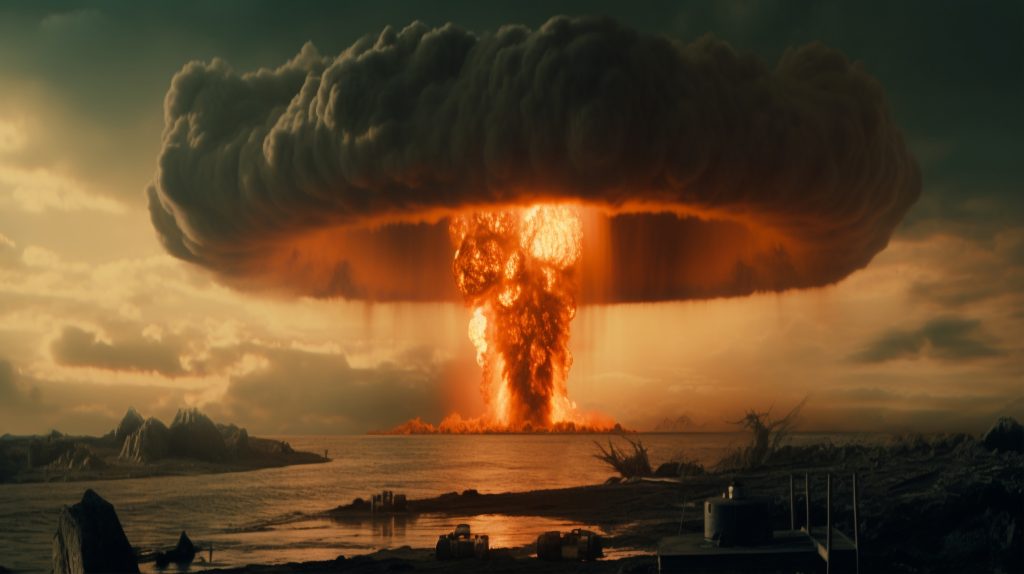Remembering Hiroshima and Nagasaki: A Day of Reflection and Hope for Peace
During World War II, two well-known cities of Japan which are Hiroshima and Nagasaki became targets of nuclear attack. Hence, every year on 6th and 9th August, the world observes Hiroshima and Nagasaki Day. It’s a heartfelt occasion to remember the thousands of innocent lives lost in the atomic bombing of Hiroshima and Nagasaki, Japan, in 1945. Japan hosts peace memorial ceremonies each year on this day and people come from around the world.

History of Hiroshima and Nagasaki Day

On a peaceful morning in 1945, the first atomic bomb was dropped over the Japanese city of Hiroshima on the 6th of August by the US air forces during World War II when Japan was fighting against the US and its allies. This was the very first time anyone had used a nuclear bomb. Approx 13 square kilometers of the city were destroyed by this weapon. More than 180,000 innocent people died in the war.
After three days, a second atomic bomb was dropped on Nagasaki, resulting in killing between 50000 to 100000 people. The bombing marked a turning point in world history and left a fear of shadows in Hiroshima and Nagasaki. It brought an end to World War II but at a devastating cost. The first Uranium Bomb dropped on Hiroshima was named the “Little Boy” and the second Plutonium bomb dropped on Nagasaki was named “The Fat Man”.
Before dropping the bomb, the US tried to warn the Japanese citizens but they ignored it. Japan and the US relations got worse after Japan tried to take over Indochina with the intention of capturing oil-rich areas. As a result, to make Japan surrender in World War II, the US president authorized the use of atomic bombs.
Remembering the Victims
Hiroshima Day is a time to honor the victims of the bombing. It’s a day to remember the families that fell apart, the dreams destroyed, and the lives forever changed by that single event. The stories of survivors, their experiences of loss, and the fight for a world free from nuclear hold great importance.
Do you want to know more about our hihellohr Software?
The Impact of the Nuclear Bomb on Hiroshima and Nagasaki
Before the blast, there were about 90,000 buildings in Hiroshima from which around 28,000 buildings remained there after the explosion. They weren’t just powerful explosions but a new kind of destructive force. The bombs exploded high above the cities and created a huge explosion. The extreme heat turned people and objects into ashes within seconds. It was a crowded and business residential place which made it an ideal place to drop the bomb and cause maximum destruction. The Bomb was dropped on the city center and about 80,000 people were instantly killed and nearly 35,000 people were injured due to the blast
Even after years, some of the survivors from this city were experiencing diseases like breast cancer, lung cancer, hair loss, internal bleeding, and thyroid. Many people died within days or weeks after the explosion.

Why are Nuclear Test Explosions Banned?

The United States and the Soviets together developed nuclear weapons. These weapons were far more destructive than the bombs used on Hiroshima and Nagasaki, raising fears of a nuclear war that could destroy the entire planet. To develop even more powerful weapons, both sides conducted several nuclear tests throughout the 1950s and 1960s. These tests caused many health problems and changes in the atmosphere. People living thousands of miles away from the test sites were affected, causing concerns about the long-term consequences.
As the dangers of nuclear weapons became increasingly clear, the deactivation of weapons began to grow. People around the world were horrified by seeing the destruction in Hiroshima and Nagasaki after the nuclear explosion and called for a ban on nuclear testing.
In 1963, the Partial Test Ban Treaty was signed, banning nuclear tests in the atmosphere, underwater, and in outer space. This was a major step towards reducing the spread of radiation. The fight for a complete ban continued. Finally, in 1996, the Comprehensive Nuclear Test Ban (CTBT) Treaty was implemented by the United Nations.
How To Contribute?
There are many ways how you can contribute to raising awareness on threats of nuclear weapons:
Educate Yourself:
Learn more about the bombing of Hiroshima and the ongoing risks of nuclear weapons. Share this knowledge with others.
Support Peace Organizations:
Organizations working for nuclear disarmament and peacebuilding often hold events and campaigns on Hiroshima Day. Participate and raise awareness. Speak to your representatives about supporting policies that promote peace.
Despite these efforts, the threat of nuclear weapons remains. Thousands of nuclear weapons still exist, and some countries continue to modernize their weapons. However, the story of Hiroshima and Nagasaki serves as a crucial reminder of the devastating consequences of the nuclear war left on Hiroshima and Nagasaki. The fight for a world free of nuclear weapons continues, and the lessons learned from those horrific events must guide us toward a safer future.
Related Articles:




